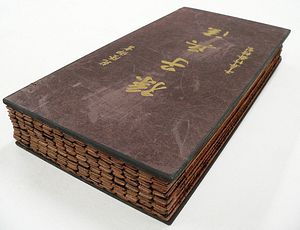In the fifth chapter of the ancient Chinese classic The Art of War, entitled “Shi” (or “Energy” in some translations), Sun-Tzu argued, “The clever combatant looks to the effect of combined shi… the shi (or energy) developed by good fighting men is as the momentum of a round stone rolled down a mountain thousands of feet in height.”
Shi (势 in Chinese) is a rather complex yet extremely important concept to understand Chinese military and diplomatic strategies, both historically and in contemporary times. It is not quite accurate to understand “shi” merely as “energy,” due to cultural and linguistic differences; shi includes some deeper meanings that “energy” does not satisfactorily convey, including circumstances or environments that substantially support one party in a conflict. Shi may also be used to describe the overall advantageous psychological condition of a party in a conflict. Nevertheless, the word “energy” may help English-speaking readers to understand the idea of shi, if they imagine how much momentum a giant stone rolled down a mountain of thousands of feet may carry. From this perspective, energy is a critical piece of shih, although the latter term is much more comprehensive.
In the ongoing dispute with India on the Doklam plateau, China holds much more shi.
Historical documents and records from both sides and even the treaty between Qing China and Great Britain in the late 19th century support China’s position in the current entirely unwanted conflict that involves the area of Doklam or Donglang, a part of China’s Tibet Autonomous Region that shares a border with Kingdom of Bhutan and the former Kingdom of Sikkim, which was seized by India in 1975. Located between China and India, the Doklam area just looks like a “dagger” stuck into India’s extended sphere of influence, which includes both the long-disappeared Kingdom of Sikkim and today’s Bhutan. (The latter, which also claims the Doklam plateau, does not have a diplomatic relationship with China.)
India seems to be very eager to change the situation and the rules according to its own will, despite the historical facts, but the current circumstances strongly suggest that India has cornered itself in a military and diplomatic dilemma. This is gives minus points to India’s shi in its ongoing stand-off with China.
In the China-India territorial conflict of 1962, the Chinese soldiers virtually “rolled down” from the plateau and swept over the Indian troops, leaving New Delhi an unbearable dismay at its defeat. That sentiment has lingered over for years, especially among some politicians, and is impacting India’s response to the current standoff. While Indian Defense Minister Arun Jaitley pointedly asserted in late June that “the India of 2017 is different from what it was in 1962,” such statements alone would not add to India’s shi.
The truth is that the Indians first entered the Doklam area with a group of over 270 soldiers and two bulldozers on June 18, 2017, but now they are actually retreating. As of August 2, India had left behind a group of 48 soldiers and one bulldozer, according to China’s Foreign Ministry.
Jaitley is correct about the rise of India, to some extent. But if the rise of India is a success, the rise of China truly has been a miracle. The same contrast also applies to the rise and modernization of the Indian and Chinese military forces since 1962.
However, military conflict with India is never a favored choice for China. The history of cooperative relations between Beijing and New Delhi, for example in the Bandung Conference of 1955 and later the Non-Aligned Movement, also proves that reconciliation is completely possible.
But in the current stand-off with India, the best scenario for China will be winning without fighting, Sun Tzu’s favored method — a victory through shi. Even then, the odds are not against China should things come to the worst-case scenario. That raises the question: To what extent is New Delhi is willing to read and apprehend the messages being sent from Beijing?

































